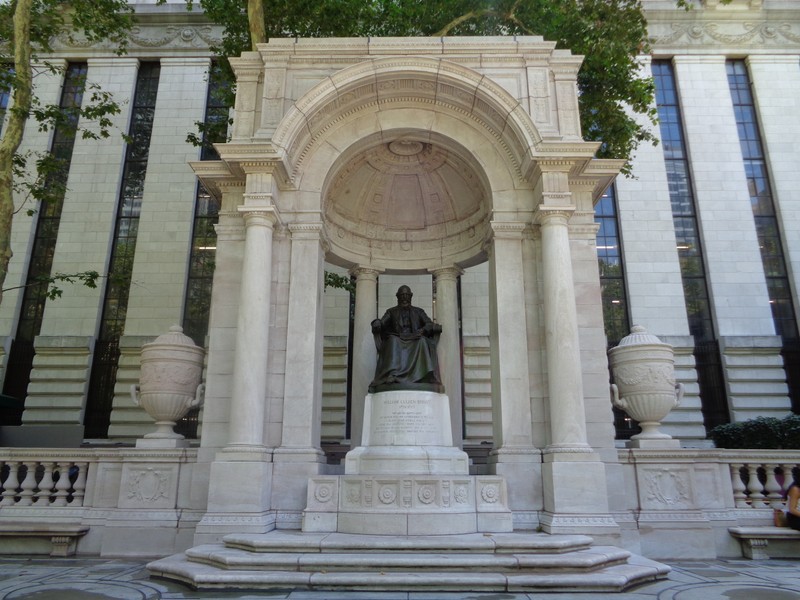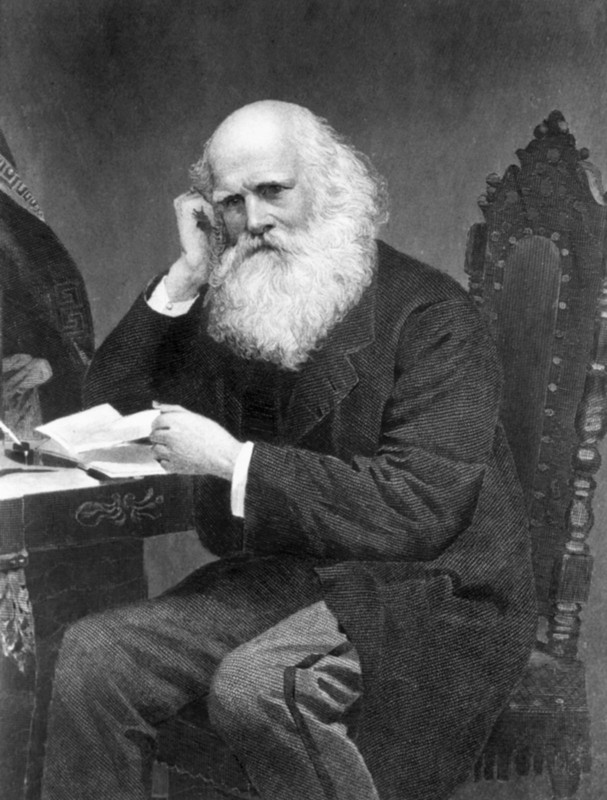William Cullen Bryant Memorial
Introduction
Text-to-speech Audio
Images
William Cullen Bryant Memorial

William Cullen Bryant (1794-1878)

Backstory and Context
Text-to-speech Audio
William Cullen Bryant was born in Cummington, Massachusetts on November 3, 1794. His father, Peter Bryant, was a doctor and state legislator. His mother, Sarah Snell, descended from passengers on the Mayflower. An extremely bright child, Bryant took advantage of his father’s extensive library, reading voraciously. At the age of thirteen, he wrote his first poem, “The Embargo,” a satire which called for President Thomas Jefferson’s resignation over his support for the Embargo Act of 1807. The poem was published in a pamphlet the following year. At the age of sixteen, Bryant enrolled at Williams College as a sophomore. While attending Williams College, he wrote “Thanatopsis,” which explores human beings’ relationship with death. Several years later, Bryant’s father found the manuscript on his son’s desk and submitted it to the editors of the North American Review. Originally published in 1817, “Thanatopsis” established Bryant as a serious poet. It remains his most famous work.
Bryant’s stay at Williams College was never meant to last long; he planned on transferring to Yale. Family finances, however, scuttled those plans, so Bryant dropped out and began reading law. At the age of twenty-one, he was admitted to the bar. For the next ten years, Bryant practiced law in Massachusetts. During this time, he married Frances Fairchild. The two would enjoy a happy marriage of nearly fifty years. Despite practicing law, Bryant continued to write poetry and, in 1821, published his first collection of poems, appropriately titled Poems. Republished with revisions decades later, Poemssolidified his standing as one of America’s first great poets.
In 1825, Bryant and his wife moved to New York City, where he began a long and storied career in journalism. That year, he began working as co-editor of the New York Review. In 1827, Bryant became an editor for the New York Evening Post. Two years later, he became editor-in-chief of the periodical. Bryant would occupy the position until his death nearly fifty years later. During his time at the helm of the New York Evening Post, he promoted abolitionism, along with the rights of immigrants and workers. Bryant was an early supporter of Abraham Lincoln and introduced the Illinois politician at Cooper Union in late February 1860. Lincoln’s speech helped propel him to the Republican nomination for president and eventually the White House. Bryant died in New York City on June 12, 1878.
Several years after Bryant’s death, in 1884, Reservoir Square in Manhattan was renamed Bryant Park in honor of the late poet and long-time editor-in-chief of the New York Evening Post. In the 1890s, the City of New York approved plans for the construction of the New York Public Library on the site of the Croton Distributing Reservoir, adjoining the park. When the library was completed in 1911, so too was a memorial to Bryant, which sat at the rear of the library. The memorial consists of a seated, over-life-sized bronze statue of Bryant on a pedestal situated under a marble arciform canopy. Sculptor Herbert Adams designed the statue, while Thomas Hastings—of the architectural firm Carrère and Hastings that built the library—designed the pedestal and canopy. The memorial was dedicated on October 24, 1911.
Sources
Durante, Dianne. Outdoor Monuments of Manhattan: A Historical Guide. New York: New York University Press, 2007.
Haralson, Eric L., ed. Encyclopedia of American Poetry: The Nineteenth Century. New York: Routledge, 1998.
"History." Bryant Park. Bryant Park Corporation. Web. 16 December 2020 <https://bryantpark.org/blog/history>.
"William Cullen Bryant." Encyclopaedia Britannica. Web. 16 December 2020 <https://www.britannica.com/biography/William-Cullen-Bryant>.
"William Cullen Bryant." New York City Department of Parks and Recreation. The City of New York. Web. 16 December 2020 <https://www.nycgovparks.org/parks/bryant-park/monuments/189>.
https://www.nycgovparks.org/parks/bryant-park/monuments/189
https://www.britannica.com/biography/William-Cullen-Bryant
